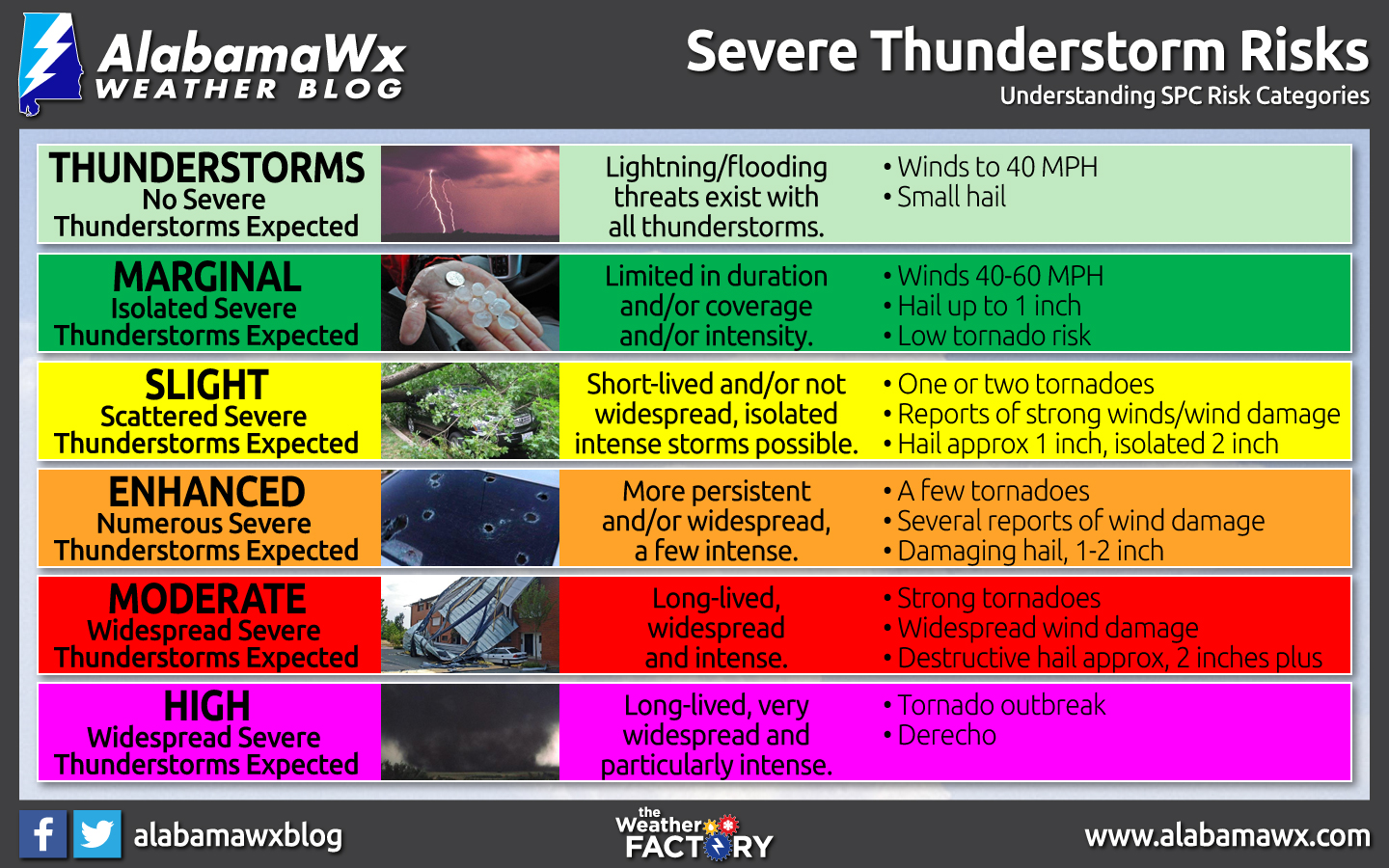Storm Prediction Center Severe Weather Outlook Categories Explained
We have a severe weather threat coming this week, so I thought it would be a great time to review the Storm Prediction Center Severe Weather Outlook categories:
The Storm Prediction Center issues convective outlooks that depict non-severe thunderstorm areas and severe thunderstorm threats across the contiguous United States. Then the SPC breaks down these threats into categories of levels of severity. These categories are tied to the probability of a severe weather event occurring within 25 miles of your location.
The National Weather Service defines a severe thunderstorm as having:
• Wind gusts of 58 MPH or greater
• Hail of at least 1 inch in diameter or greater
• A tornado
All thunderstorm categories imply lightning and the potential for flash flooding. Although lightning can be deadly, the National Weather Service doesn’t use it to define a severe thunderstorm. If it did, every thunderstorm would be severe, by definition. Also, excessive rainfall may lead to deadly flash flooding, heavy rain is not considered severe. Flood threats are handled through a separate set of watches and warnings from the NWS Birmingham.
Here is a breakdown of all of the risk categories issued by the Storm Prediction Center…
THUNDERSTORMS (light green)
This just simply means that general thunderstorms of a non-severe nature is forecasted for the locations outlined in the light green area. Winds less than 40 MPH and some small hail could occur, but these are under severe limits. As with every thunderstorm, lightning and flash flood threats exist.
MARGINAL RISK (dark green)
This category is defined as a forecasted area where severe storms of either limited organization and longevity, or very low coverage and marginal intensity could occur. Within this risk category, you can expect storms with winds of 40-60 MPH, hail up to 1 inch in diameter, and/or a low risk of tornadoes.
SLIGHT RISK (yellow)
This category is defined as a forecasted area where organized severe storms, which is not widespread in coverage with varying levels of intensity could occur. Within this risk category, you can expect storms with one or two tornadoes, hail of approximately 1 inch in diameter with isolated spots of hail of 2 inches in diameter, and reports of strong winds and/or wind damage.
ENHANCED RISK (orange)
This category is defined as a forecasted area of greater (relative to the slight risk) severe storm coverage with varying levels of intensity could occur. Within this risk category, you can expect storms with a few tornadoes, several reports of wind damage, and damaging hail of 1 to 2 inch diameter.
MODERATE RISK (red)
This category is defined as a forecasted area of widespread severe weather with several tornadoes and/or numerous severe thunderstorms are likely, some of which could be intense. could occur. This risk is usually reserved for days with several sparkles producing intense tornadoes and/or very large hail (greater than 2 inches in diameter), or an intense squall line with widespread damaging winds.
HIGH RISK (magenta)
This category is defined as a forecasted area where a severe weather outbreak is expected either from numerous intense and long-tracked tornadoes, or an long-lived derecho producing hurricane-force wind gusts and widespread damage. This risk is usually reserved for when high confidence exists in the widespread coverage of severe weather with embedded instances of extreme severe (violent tornadoes or very damaging convective wind events).
Category: STANDBY
















